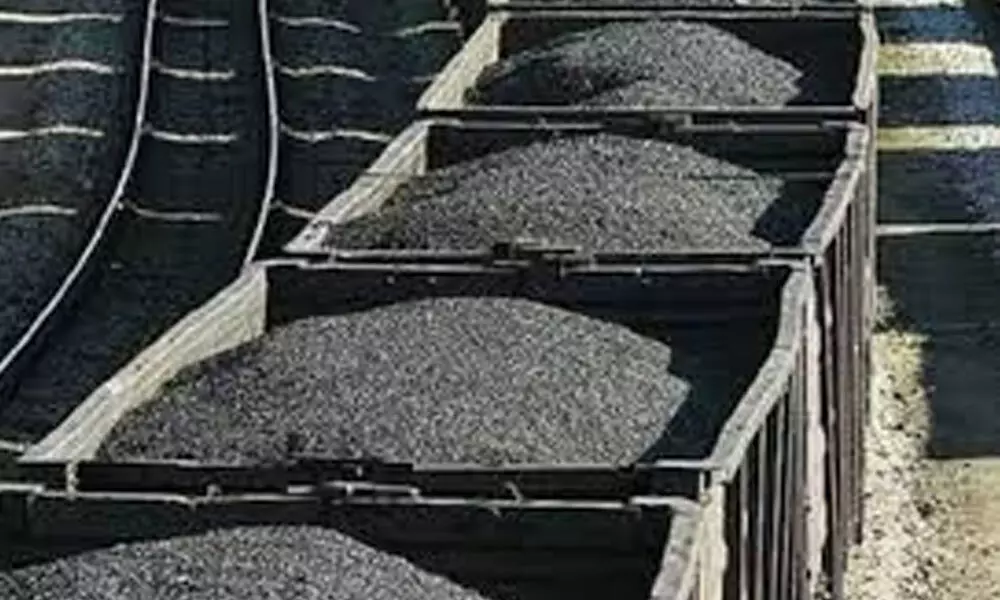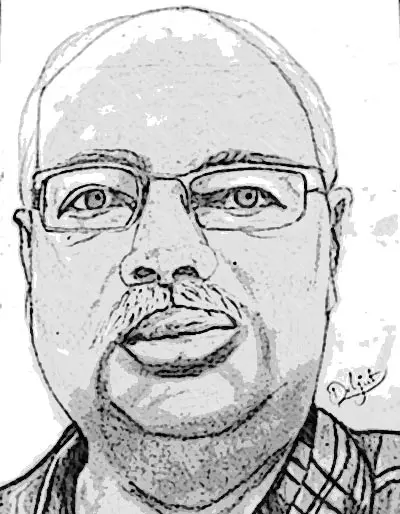Live
- Gurugram civic polls: Congress announces mayor, councillor candidates
- CM Revanth Reddy Urges Civil Servants to Adopt a Proactive Approach in Solving Public Issues
- New Delhi station tragedy: Railways denies platform change or special train cancellation
- Dharmendra Pradhan takes holy dip at Triveni Sangam in Prayagraj
- Nominations for Prime Minister’s ‘Yoga Awards 2025’ now open
- J&K: Brief exchange of fire along LoC in Poonch sector
- TPCC Defends Revanth Reddy’s Remarks on PM Modi’s Caste, Hits Back at BJP
- KTR Accuses Congress Government of Neglecting Gurukuls, Claims Institutional Collapse
- Progress of country, tribals are inter-linked: President Murmu
- FIH Women’s Pro League: England thwart India fightback, win bonus point in shootout
Just In

India stares at huge energy crisis
At a time when the country is still grappling the negative impact of Covid-19, the economy is faced with a serious threat in the form of inflation, due to surge in the prices of petrol and LPG gas
At a time when the country is still grappling the negative impact of Covid-19, the economy is faced with a serious threat in the form of inflation, due to surge in the prices of petrol and LPG gas. This steep price hike of petrol and petroleum products has cast an adverse effect on the much-needed consumer boom.
Women folk say petrol is out of bounds so one cannot think of going out even on weekends. Gas is out of reach as the prices have been increased by 62 per cent, so one needs to rationalise its utilisation. The rise in the prices of petrol and gas impacts the prices of other commodities and household budgets are going haywire.
Firewood cannot be purchased because it is also in short supply, thanks to the over jealous attitude of human beings who are destroying forests in the name of development. Coal, cow dung and firewood are available only on e-commerce sites like Amazon. The only possible option is use of induction stoves but now that too seems a distant dream for two reasons: One, the power tariff could go up as gas-fuelled power projects will push up the price. Two, India is on the brink of an unprecedented power crisis and this situation is likely to continue for next six months.
According to central government, more than half of the country's 135 coal fired power plants are running on fumes, as coal stocks are at critically low level. This would affect 70% of the thermal units which could derail the process of recovery of economy in the post- pandemic period.
Why is this happening? It is not something that has cropped up overnight. It has been in the making for months but has been kept under wraps till recently as the power consumption increased by about 20% or so after the second wave of Covid-19. Coal prices in the international market increased by 40% and imports fell to a 24-month low. India according to government is home to the fourth largest coal reserves in the world and is yet the second largest importer. Union Power Minister R K Singh in a recent interview to a newspaper admitted that in recent years, India's production has lagged as the country tried to reduce its dependence on coal to meet climate targets. One good sign was that the power plants which used to depend heavily on imported coal for various reasons are now going in for domestic supplies, thereby saving on foreign exchange. But this has put greater pressure on the domestic supplies. Importing coal to bridge the shortage is not an option for the present, say experts, since it has become very expensive.
But then, it is a Catch-22 situation. If coal is imported, the price hike burden will have to be passed on to the end user and the manufacturing units like steel, cement etc will in turn pass on the costs to the consumers and, eventually, inflation will go up. Already inflation is on the high side. Prices of daily essentials have touched a new high and if the coal crisis continues, if not now a few months down the line, power tariff will be hiked – if not directly, in the name of some cess. If coal is not imported, tiding over the crisis may become a problem.
Officials who should be firm in telling the political executive about the seriousness of the situation confide only on condition of anonymity that the situation is indeed worrying. But on record, no government accepts the reality. Still, the governments don't feel the need to give a break to launch of freebies, without working out the economics – and they claim to know how to get funds. They only know to fleece the genuine taxpayer. The BJP always blames the Congress that it resorts to policy of appeasement. But it does not say anything when most of the state governments continue to indulge in appeasing people on caste and community basis for the sake of clinging to power.
Though the present coal shortage should have been treated as a wake-up call and appropriate strategies to aggressively pursue use of renewable energy should have been in the pipeline by now, no one is willing to accept that it is a wakeup call. The fact is that the gravity of the situation is huge. There can be no short-term solution. Dependence on thermal power is something the country cannot reduce so soon or so easily.
Experts advocate a mix of coal and clean sources of energy as a possible long-term solution. Also, power producers should have enough stocks as reserves. But that normally does not happen as it involves expenditure. What is worse is that even in the present crisis situation, officials, particularly in the states, instead of putting the facts straight before the public keep saying that they are in talks with the centre and hope the situation will improve. Why be blindfolded when the reality is staring at us? When there is countrywide coal shortage, from where will the Centre supply? Whom are the officials and the political executive trying to cheat?
One silver lining in the crisis is that winter is approaching and kharif has almost come to an end and, hence, for at least another three months the demand for power would come down to some extent. But again, from February, it would start going up as Rabi season would begin and temperatures will start increasing at least in Southern parts of the country and some parts of Western India like Mumbai and Ahmedabad. If the central and the state governments can loosen their purse strings and announce some reduction of tax rate on fuel and gas, then the dependency on gas-based power can go up and it would be possible to reduce the impact of the coal crisis. But I am sure no government would show that kind of magnanimity even temporarily, the reason being they don't believe in give-and-take policy.
It remains to be seen to what extent the decision to source coal from captive mines would help tide over the crisis. Though the crisis was knocking on the doors since February, the union power ministry in a statement last month said that the "rising demand for energy augurs well for the economy and is encouraging," as it means that more households are able to afford electricity, and industries are getting back to pre-pandemic levels. Didn't it know that India's coal supply was hit by the monsoon season and that heavy rainfall impacts mining and transportation? Still the Power Minister maintains that the current shortage is "beyond" normal, but it hadn't resulted in any power outages yet. So, when do we recognise the crisis? When outages of several hours are there and the industry and other sectors are closed? One should know when to put up a bold face and when to accept that the situation is grave.
Unfortunately, no one talks about alternatives. God forbid if the crisis hits power supply, we will hear statements like Coal India has been asked to ramp up supply. But how and from where? It's high time the Centre announced contingency plan to meet the crisis. Importing coal would further strain country's economy which is just showing signs of recovery. It should be noted that Europe is already paying high price for coal and China is in the midst of power crisis and outages. Factories there have cut down on production.
The union power minister accepted that it was a touch-and-go situation. "If you have 40,000-50,000 MW of thermal capacity with less than three days of stock, you can't be secure," Singh said.
Officials claim that, "The Ministry of Coal has amended Mineral Concession Rules, 1960 with a view to allowing sale of coal or lignite, on payment of additional amount, by the lessee of a captive mine up to 50 per cent of the total coal or lignite This amendment, the government feels, will help in making more coal available in the market by greater utilisation of mining capacities of captive coal blocks.
Well, all this explanation still does not instil the kind of confidence it should have in the common man. I am reminded of a statement the Telangana Chief Minister, K Chandrashekar Rao, made at a public meeting sometime back. He wanted to take a dig at the previous governments in undivided Andhra Pradesh and said after bifurcation there would be no power shortage in future. Let us hope his prophecy turns out to be true.
One thing is clear. It's time the BJP changes its slogan of 'Sab ka Saath' as it is turning out to be 'Sab ko haath.' 'Kis Ka Vikas' are we seeing in various reports which speak volumes?

© 2025 Hyderabad Media House Limited/The Hans India. All rights reserved. Powered by hocalwire.com







